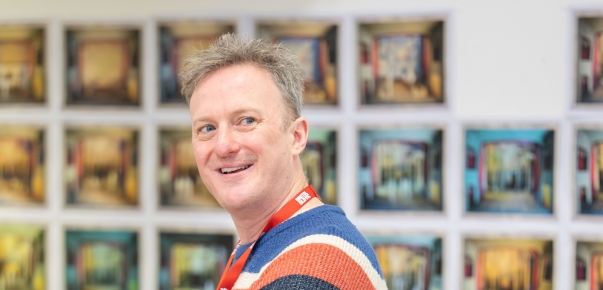Art is Power: Michele Curtis
28 Sep 2021In 2020 Bristol-based artist and heritage interpreter Michele Curtis was asked by Bristol Old Vic to create a portrait mural to mark the naming of our rehearsal loft as the Equiano Studio. It’s named after the pioneering abolitionist Olaudah Equiano whose landmark autobiography heralded a turning point in the abolition movement. We hope that his courage, vision and creativity might inspire others to challenge and reform injustice wherever it’s seen. His incredible story will be dramatized in Giles Terera’s play The Meaning of Zong which opens here in April.

Michele is best known for The Seven Saints of St Pauls – a four-year creative and digital placemaking project depicting the founders of St Paul’s Carnival through portrait murals on prominent walls across St Pauls in Bristol. She is the Founder and Director of Iconic Black Bristolians, a project which recognises and celebrates Bristol's Black History through art. We talked to her about why she took on the project.
How did you get involved in the project?
I received an email one day from Bristol Old Vic saying; ‘we’d like to talk to you about a mural’. I’d worked there a couple of years ago doing a series of portrait workshops. They told me they wanted a mural of Olaudah Equiano, and that they were renaming a Studio in honour of him, in partnership with the Merchant Venturers and I thought, ‘oh wow!’ It began from there, really.
Did you know much about Equiano before beginning the project? Did your perceptions of the man change as you spent more time with him?
I didn’t know much about Equiano. I only knew his name and what was believed to be his portrait. I knew he was from Nigeria and that he was an enslaved African but that was about as much as I knew. During the design process I did some research to find out more about who he was and also searched for images of him. Learning about his story, what he’d been through and how many times he’d bought his freedom - was so inspiring. I felt extremely privileged to have been asked to paint his portrait and extremely humbled because it’s a huge undertaking when you paint such a prominent Black British figure and felt as though I would be holding a small part of his legacy in my hands... it was a huge responsibility.
What were the challenges in painting the mural and are you pleased with the results?
Covid was obviously the biggest one. We had to work through lockdown, trying to arrange how to get in and get it finished. It was a lot of stopping and starting throughout 2020 but then when we finally finished in 2021, my assistant Nadia Lloyd and I were extremely proud of it. What was even more interesting and gave me a real sense of pride, was when I visited him recently. I went to see him. As I walked out of the lift and saw him, I felt he was just such a beautiful piece and was so very, very proud. (I speak as if he’s alive because my paintings feel like living beings and I get quite emotionally involved with my portraits!). I haven’t seen his portrait represented in that way before either, so it’s the first painting I’ve seen of Olaudah Equiano, which makes me happy.
How does he compare with other portraits you’ve done in the past?
I love all my portraits equally because I don’t see them as portraits, I see them as people. They’re all my babies. Creative portrait painting is such an emotional and spiritual thing for me, especially if it pertains to my African Caribbean heritage. It gives me a deep sense of belonging and visibility.
Given the racism I experienced when I was growing up, the othering, judgement and stigmatisation as a Black woman, when I have the opportunity to celebrate someone who looks like me in a positive light it makes me feel like I really am British and really do deserve to be here and that I really am seen – just like the people I’m depicting in my portraits. I hope that through my work other people can feel that sense of belonging too, which is ultimately what I wanted to achieve.
What is it about this type of work that you love?
I’m working on a project now – again with my assistant Nadia Lloyd – and she said to me: ‘I just love doing this - it’s amazing to be able to get up and just paint every day and learn about the people that your painting’, and I think that’s the key. I love what I’m doing; I love learning about different people, different cultures and different things; and I get to paint all day or research or read. That’s happiness for me. That’s my bliss, that’s my sweet spot.


